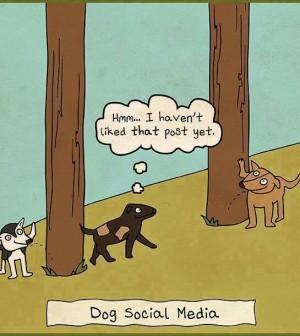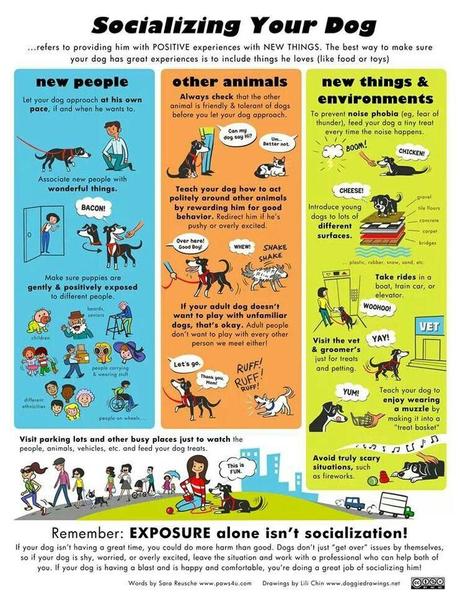
Your puppy will need to get used to people, cars, and the outside world. Training may also be necessary for an older dog who lacks confidence or has behavioral problems outside the home.
(Check out Dog Socialization: How to Introduce Your Pup to Social Training)
Local Walks
Once your puppy has been inoculated and microchipped, he can be taken for walks. It’s important to expose young pups to as many different situations as possible. Once puppies reach 12 weeks, their attitude becomes more guarded and if they encounter something strange their first instinct will be to run away.
For older dogs, walks are about letting them get to know their “territory.” Even so, there may be things that your dog has not encountered before such as livestock and wild animals.
Creating Confidence
When your dog first ventures into the wider world, the experience can be overwhelming for him. Some things may be frightening such as cars and other pets. Others may be powerful distractions; for instance, a toddler on a bike or animals crossing the street could trigger your dog’s chasing instinct. Your dog needs to learn confidence- and you need to be sure you can depend on him to behave in all situations.
Introduce your pet to anyone who wants to meet him. If you have kids, meet them from school with your pup so he gets used to seeing other children.
When acquainting your dog with other dogs, start with those you already know. You could arrange “puppy play dates” at home or go out for walks with someone who has an older, easy-going dog. If your dog is upset by strange dogs, walk away from them or ask the owners to hold their dogs or put them on the lead while you pass.
It is best to keep your dog on a lead around livestock and wild animals – even for quiet dog, the temptation to chase can be sudden and irresistible. In many countries, dog owns have a legal duty to prevent their animals from harassing livestock.
Get your dog used to distractions such as motor vehicles, bicycles, prams, and people on roller-sakes or skateboards.

Socializing Your Dog *
Traveling by Car
As a dog owner you have a legal duty to transport your dog in a way that keeps the dog and other vehicle occupants safe. If you have a large dog, you could fit a dog guard behind the rear seats; this should be sufficient for a short journey under one hour. For long trips or in a larger vehicle put your dog in a dog crate. If your dog is traveling on the back seat of your car, a dog harness that links in with the seatbelt system can restrain him safely.
Start travel training by teaching your dog to sit in the car for a few minutes with the engine off and the doors open. Graduate to sitting in the car with the doors closed and engine on for a few minutes. Then start taking short journeys of a few minutes, building up to longer trips.
When traveling, don’t let your dog stick his head out of the window as he could risk head or eye injuries. For long journeys, carry water and a bowl and stop at least every two hours for your dog to have a drink and get out and relieve himself. Switch on the air conditioning if your car has it, and never leave your dog alone inside a car even with the windows ajar – on a warm day or in direct sunlight, heat stroke can kill a dog in as little as 20 minutes.
Watch for any sign of travel sickness such as drooling or panting. Excessive barking or chewing on the car’s interiors are other signs of distress. To help prevent these, make sure your dog has a non-slip surface to stand on the car.
* image source

